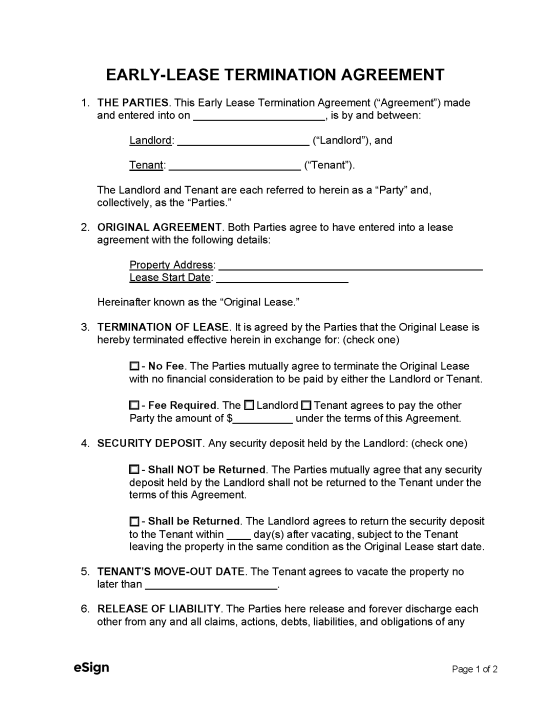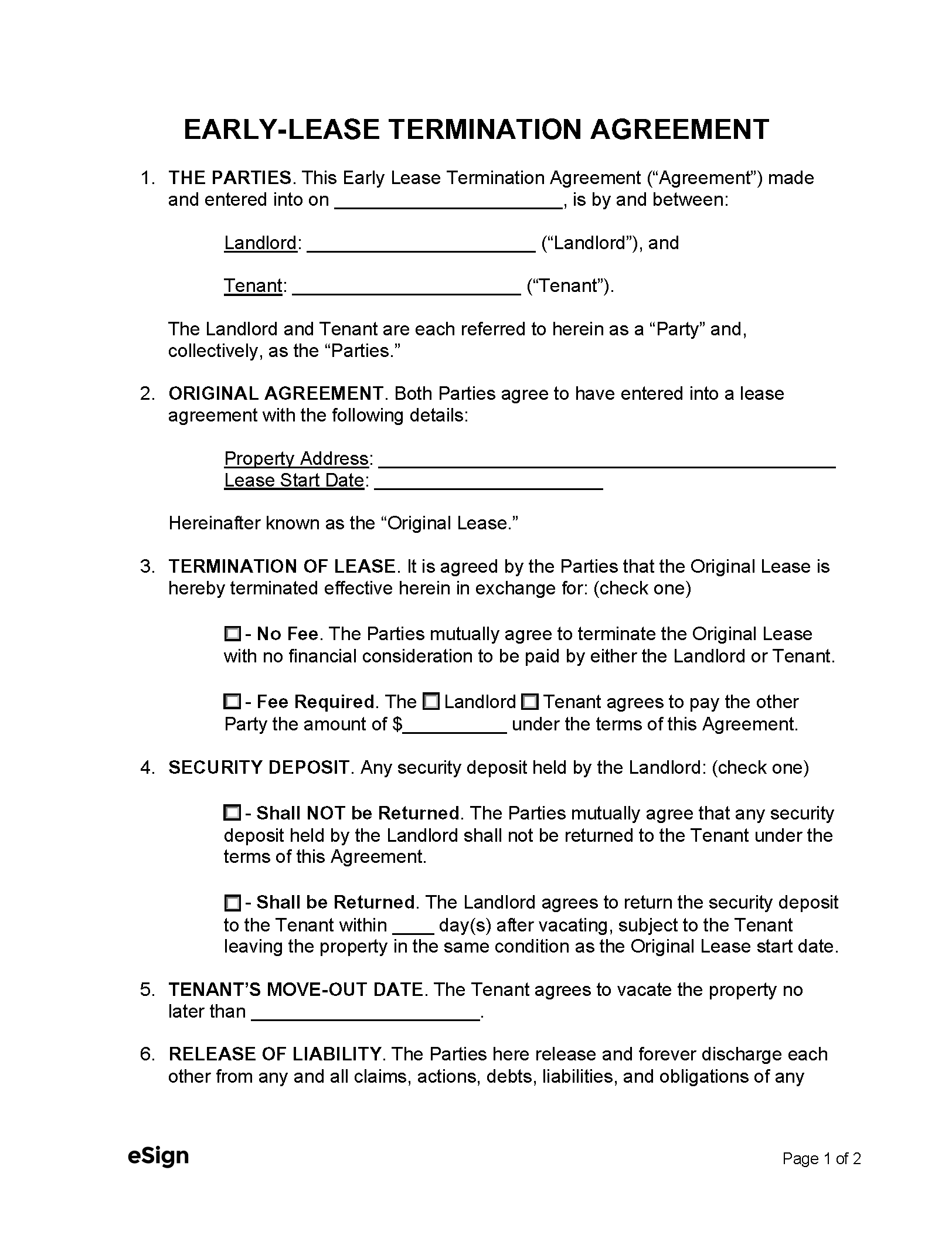
An early lease termination agreement ends a lease agreement and its liability to both a landlord and a tenant. A lease can only be terminated early, in good faith, by the consent of both parties. Therefore, payment by either the tenant or landlord to terminate a lease early is often considered.
An early lease termination agreement ends a lease agreement and its liability to both a landlord and a tenant. A lease can only be terminated early, in good faith, by the consent of both parties. Therefore, payment by either the tenant or landlord to terminate a lease early is often considered.
PDF Download
An early lease termination agreement ends a lease agreement and its liability to both a landlord and a tenant. A lease can only be terminated early, in good faith, by the consent of both parties. Therefore, payment by either the tenant or landlord to terminate a lease early is often considered.
4.7 | 37 Ratings Downloads: 5,644
Whether you’re the landlord or the tenant, it is best to contact the other party by phone or e-mail and inform them why the lease must terminate early. It is recommended to provide evidence to back up the claims; for example, if a tenant claims they lost their job, a copy of the employment termination letter should be sent.
If the party requesting termination has no legal recourse, they will be required to obtain the other party’s consent. The best way of getting the other party to agree is to suggest a financial payout to terminate the lease. Otherwise, there may not be motivation for one party to cancel.
Tip for Tenants – If a tenant requests to cancel early, they can suggest that the property will be vacant anyway and are trying to seek a mutually amicable solution. Especially in the event of a job loss, the landlord will commonly accept the tenant’s security deposit plus an additional payment to terminate the lease.
Once the terms are agreed, an agreement should be written and signed. This simple contract can release each party from the other after the tenant vacates the property.
The tenant must vacate the property with its condition to be the same as on the move-in date. If not, the landlord can perform a move-out inspection and deduct the repair costs from the security deposit if damage is found on the property.
Refunding the Security Deposit – The tenant must give the landlord their forwarding address to receive any remaining security deposit amount from the landlord.